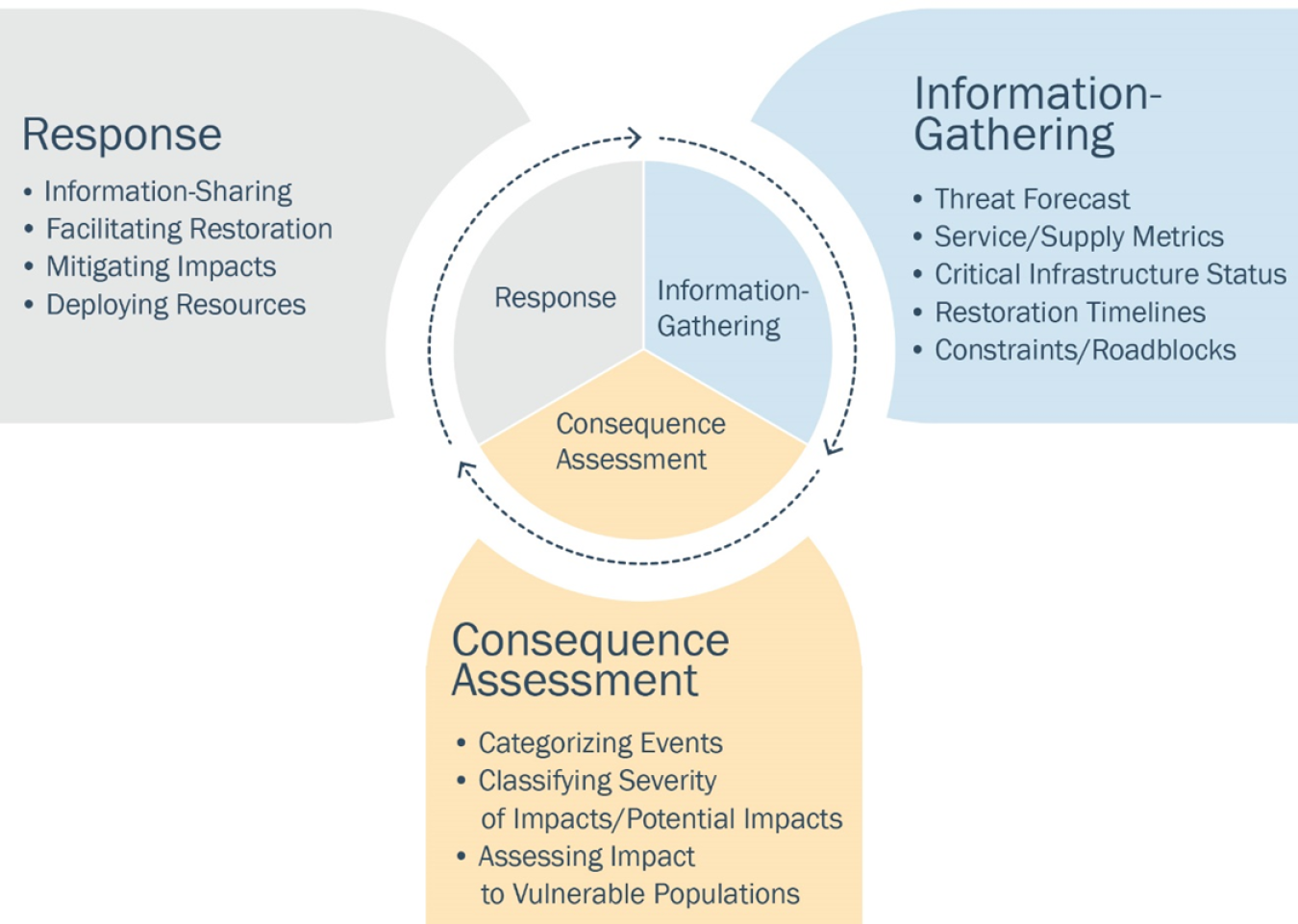DOE Energy Emergency Response Playbook
When energy emergencies take place, state and territorial energy offices often step in to assist with response efforts. For state energy officials with an emergency preparedness and response role, responding involves an iterative process of gathering information, assessing consequences, sharing critical information, facilitating system restoration, and mitigating impacts to dependent lifeline sectors and consumers.
This Playbook provides a starting point for energy emergency response planning. It includes a framework for evaluating energy emergencies, guidance, templates for response actions, as well as planning, monitoring, and response resources. It is designed to be customized by states and to align with their State Energy Security Plans.
This first-of-its-kind resource was collaboratively developed by DOE's Office of Cybersecurity, Energy Security, and Emergency Response (CESER) and the National Association of State Energy Officials (NASEO).
Playbook Structure
The Energy Emergency Response playbook is arranged into three sections that align with the three stages of the response cycle: response, information-gathering, and consequence assessment.

Additional Resources
-
Visit DOE’s Emergency Response Hub for information and updates related to DOE’s response activities for specific situations.
-
 CESER’s SLTT Program enhances energy security capabilities, advances emergency preparedness, and strengthens response and recovery.
CESER’s SLTT Program enhances energy security capabilities, advances emergency preparedness, and strengthens response and recovery. -
Learn about the key types of emergency regulatory relief available for energy response and recovery efforts.

